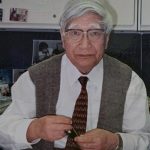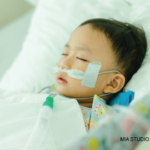I would like to tell you a story. Two, actually.
I am just returning from the 19th International Vasculitis and ANCA Workshop, which is always a fascinating meeting. In its inception, it was a workshop, in the true sense of the word. Now, we discuss anti-neutrophil cytoplasmic antibody (ANCA) testing as casually as we discuss obtaining a complete blood count. Then, ANCA testing was much less straightforward—we knew ANCA could be directed against several neutrophil cytoplasmic antigens, including proteinase-3, but who to test and how they should be tested were much less clear. The first ANCA workshop, held in Copenhagen in January 1988, included 34 participants.1 The latest workshop was attended by more than 500 participants.2
This growth reflects the growing importance of ANCA to my world, and how much the ANCA-associated vasculitides have taught us about how to approach other patients with other forms of vasculitis. This is the one meeting I attend that is not populated only by rheumatologists; sitting next to you may be a nephrologist, a pulmonologist, an immunologist or an internist, all of whom have an interest in these diseases. It really is a model for how all of our diseases should be approached.
If I’ve piqued your interest, the next workshop will be held two years from now. In Ireland. I’d love to see all of you there, but I imagine many of you will be otherwise engaged.
At this particular meeting, Rae Yeung, MD, PhD, FRCPC, professor of pediatrics, immunology and medical science at the University of Toronto, told a tale of discovery that I want to share with you today.3 The story emphasizes the importance of thinking big. But it made me recall a second story, which I heard at the 18th International Vasculitis and ANCA Workshop, about the importance of thinking small.
Thinking Small
Kawasaki’s disease was not a slam dunk.
I was a little surprised to learn that. Having grown up in the medical system when I did, I just assumed the concept of Kawasaki’s disease was immediately recognized as a truth, fully formed, like the goddess Athena emerging from the head of Zeus.
Apparently, its origins were somewhat less godlike.
Tomisaku Kawasaki was a staff pediatrician at the Red Cross Hospital outside of Tokyo when he saw his first patient with the disease that would eventually bear his name.4 Of course, he didn’t know that at the time. What he did know was that he was asked to examine a 4-year-old boy who presented with a fever, congestion of the mucous membranes, cervical lymphadenopathy, and desquamation. The patient eventually improved on his own, and was discharged, with the honest label of “diagnosis unknown.”
It was not until he saw his second patient, a year later, that he realized that he might be on to something. He put together a case series of seven patients, which he presented at a meeting of the Japanese Pediatric Association, and subsequently submitted the case series for publication.
It was rejected.
The reviewers noted the patients he described were much more likely to have an atypical form of Stevens-Johnson’s syndrome, and not a new disease entity.
Kawasaki then did what I hope most of us would have done in the same situation: He collected an additional 43 cases, which he then published as an even larger case series.5
There is a quotation, variously and apocryphally attributed to James Baldwin, George Bernard Shaw and Confucius, that says, “Those who say it cannot be done should not interrupt those who are doing it.” I like to think that whoever first said that was thinking of Kawasaki at the time.6
The morbidity of Kawasaki’s disease was not clear until four years later, when Noboru Tanaka, the head of pathology at the same Red Cross Hospital, performed an autopsy on a child who had died after having been diagnosed with Kawasaki’s disease. Up until that point, Kawasaki’s disease was considered a self-limiting diagnosis with a benign course. Dr. Tanaka’s autopsy demonstrated the child had died of a coronary artery thrombosis, establishing for the first time a connection between this mucocutaneous febrile illness and its pathomneumonic vascular finding.
This observation, too, was rejected.
Most clinicians at the time thought the connection between Kawasaki’s disease and coronary artery pathology was coincidental, not causal. It was not until a decade later that clinicians started to accept cardiovascular involvement as a hallmark of this disease.5
Since these initial reports, Kawasaki’s disease has come to be recognized as a worldwide phenomenon, affecting children in most racial and ethnic groups. It is now recognized as an independent syndrome, and the leading cause of acquired heart disease among children in the U.S. and Japan.7
Thinking Big
Why do patients develop Kawasaki’s disease? The answer, my friends, is blowing in the wind. We think.
For 50 years following the initial description of Kawasaki’s disease, episodic epidemics have been identified in Japan, the U.S. and elsewhere. The mystery has been why these epidemics emerge at a specific time and place.
The three largest epidemics of Kawasaki’s disease occurred in Japan in April 1979, May 1982 and March 1986. Investigators from the U.S. and Japan analyzed environmental factors, such as sea level pressure and surface winds, in the months preceding each epidemic.8
The investigators learned that each epidemic was preceded by a shift in the direction of the wind. Typically, in the months associated with a low incidence of Kawasaki’s disease, the winds over Japan come from the south or the northeast. When the origin of the wind changes to Central Asia, blowing over Japan from the northwest side of the island, rates of Kawasaki’s disease start to spike. Some data indicate the same winds from Central Asia, blowing across the Pacific, may be responsible for peaks in the incidence of Kawasaki’s disease in San Diego.
What is in the air from the steppes of Central Asia that is causing children to develop Kawasaki’s disease? It could be, quite literally, anything—multiple organisms could survive airborne in the long trip from Asia to Southern California, and no one knows if the etiologic agent is a single pathogen. Dr. Yeung hypothesizes it may be a class of organisms or molecules, all of which induce the same pathologic response in the right host.3
Who is the right host? Genetically, humans are 99.9% alike. The risk of developing Kawasaki’s disease likely lies in that crucial 0.1% difference. One method of determining what genetic difference may confer an increased risk is to look at single-nucleotide polymorphisms, or SNPs. There are 10 million polymorphic SNPs in the human genome, meaning that, at 10 million points in your DNA, you may have an adenine, while the person reading this article over your shoulder may have a guanine or another nucleotide.9
This is a little different than Mendelian genetics. Any individual SNP is unlikely to create a problem. It is likely a specific combination of SNPs that places an individual at risk. Determining which specific SNPs are associated with a given diagnosis may lead to additional insights into the genes that are important to disease pathogenesis.
How do we find these SNPs? A genome-wide association study (GWAS) is based on the hypothesis that if a genetic variant is associated with a given illness, then that variant should be more common among patients with the disease than in patients without. Interestingly, the GWAS approach itself is hypothesis free: You don’t have to know what you are looking for. You just look. Unburdened by hypotheses, this approach is less likely to be flawed by our own preconceived notions of what we should find.
In the days of Sanger sequencing, a GWAS would have been impossible. With advances in technology bringing down the cost and labor associated with genotyping, genome-wide association studies have been used to identify genetic variants associated with bipolar disorder, coronary artery disease, hypertension, Crohn’s disease, rheumatoid arthritis, diabetes and many other diseases—including Kawasaki’s.
In 2009, the International Kawasaki Disease Genetics Consortium conducted a GWAS in 893 patients with Kawasaki’s disease. This study identified a single functional network of five genes involved with inflammation, apoptosis and cardiovascular pathology.10 This network may provide new treatment targets, but longer term, may also explain why some children are so sensitive to winds from the central steppes.
The story of Kawasaki’s disease is the story of thinking big. The work on environmental factors associated with Kawasaki’s disease involved investigators from four institutions on three continents. The work of the International Kawasaki Disease Genetics Consortium includes investigators from Australia, The Netherlands, Singapore, the United Kingdom and the U.S. Together, these investigators—looking at large datasets representing large groups of patients with a rare disease—are making observations and advances that would have been out of reach for any single institution.
At the same time, however, I hope we don’t lose sight of the fact that all of this was dependent on individuals thinking small. It was one physician, fascinated by a single case of a single child, who was discharged a few days after he met him, that led to the first descriptions of Kawasaki’s disease. Another physician, similarly entranced by a single case, connected Kawasaki’s disease to the presence of coronary arteritis.
Big data would never identify such outliers. They would be excluded from the initial analysis because they did not meet study criteria. Or they would end up being represented by a single dot, well past the 75th percentile in the box plot, likely without further comment. Large consortiums of investigators and patients clearly bring new potential for new insights, but I hope we do not lose sight of the importance of the single observation to discovery. Rheumatology is just now starting to think big, and we are all the better for it, but at the same time, I hope we don’t forget how to think small.
 Philip Seo, MD, MHS, is an associate professor of medicine at the Johns Hopkins University School of Medicine, Baltimore. He is director of both the Johns Hopkins Vasculitis Center and the Johns Hopkins Rheumatology Fellowship Program.
Philip Seo, MD, MHS, is an associate professor of medicine at the Johns Hopkins University School of Medicine, Baltimore. He is director of both the Johns Hopkins Vasculitis Center and the Johns Hopkins Rheumatology Fellowship Program.
References
- Hoffman GS, Stone JH. Foreword. Special Issue: Proceedings of the 14th International Vasculitis and ANCA Workshop. APMIS 2009;117:1.
- Vasculitis 2019: International Vasculitis & ANCA Workshop.
- Yeung RSM. Towards precision medicine—Lessons learned from Kawasaki Disease. The 19th International Vasculitis and ANCA Workshop: Philadelphia. 2019 Apr 9.
- Burns JC, Kushner HI, Bastian JF, et al. Kawasaki disease: A brief history. Pediatrics. 2000;106(2):E27.
- Tanaka K, Onouchi Z, Tomisawa M, et al. A study of Kawasaki disease: Presentation of an autopsy case and relationship with infantile periarteritis nodosa [in Japanese]. Nippon Shonika Gakkai Zasshi (J Jpn Pediatr Soc). 1973;77:397–411.
- Quote investigator.
- Burns JC, Glodé MP. Kawasaki syndrome. Lancet. 2004 Aug 7–13;364(9433):533–544.
- Rodó X, Ballester J, Cayan D, et al. Association of Kawasaki disease with tropospheric wind patterns. Sci Rep. 2011;1:152.
- Eisenstadt L. After a decade of genome-wide association studies, a new phase of discovery pushes on. Broad Institute. 2017 Aug 14.
- Burgner D, Davila S, Breunis WB, et al. A genome-wide association study identifies novel and functionally related susceptibility loci for Kawasaki’s disease. PLoS Genet. 2009 Jan;5(1):e1000319.


